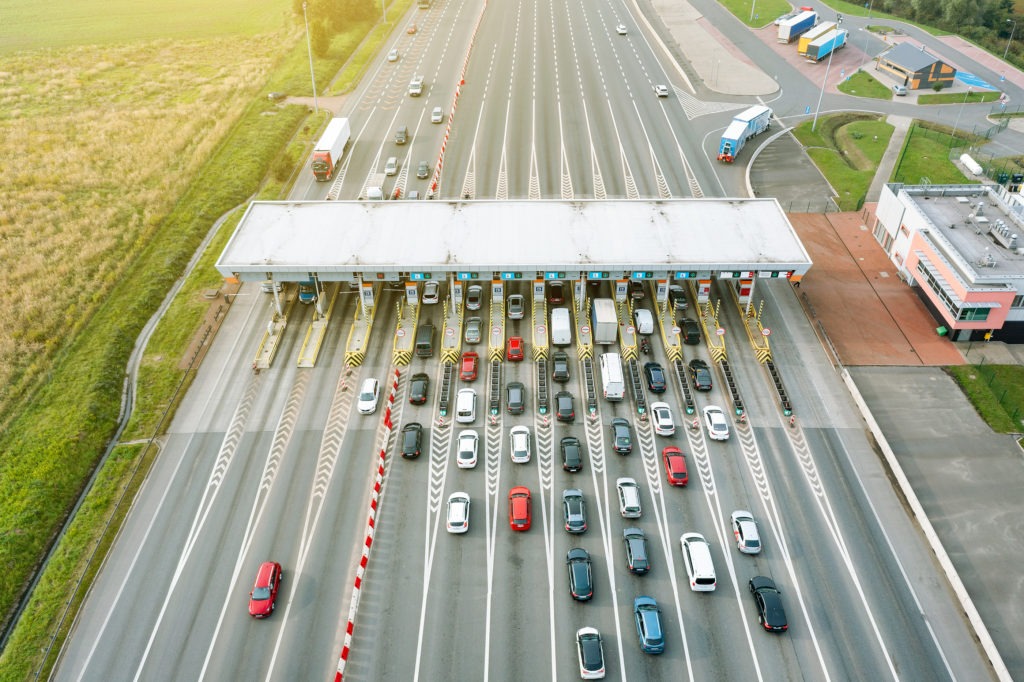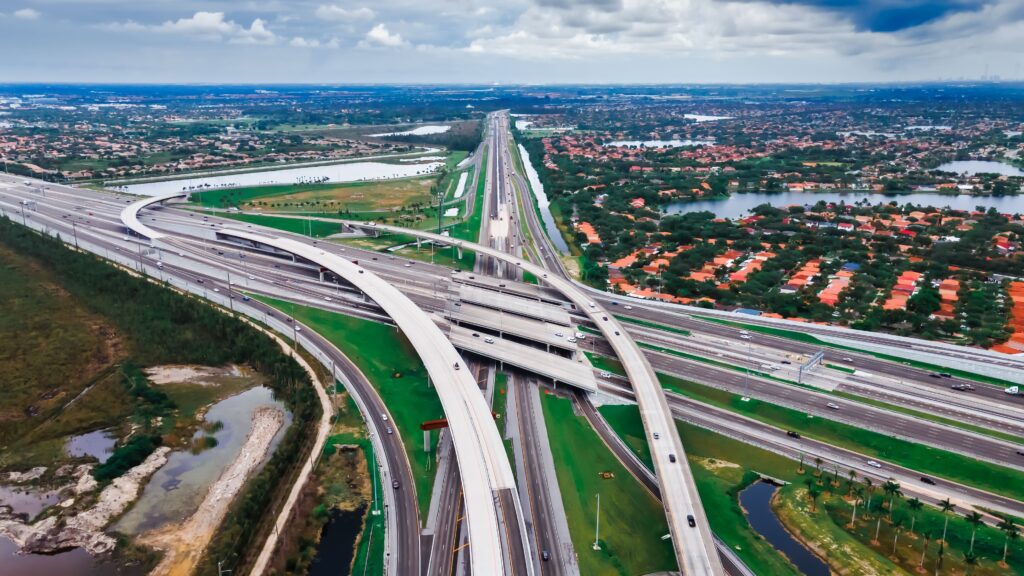Can you avoid dangerous roads in Florida? Thanks to modern technology, you can find alternative solutions for driving on Florida’s most dangerous roads when using a car’s GPS for directions. Just scroll to “Avoid Highways” or “Avoid High-risk Areas,” and there you have it.
For the most part, (eventually) getting from point A to point B by traveling off the beaten path is not always practical. We cannot realistically avoid all dangerous roads and hazardous traffic—especially when every place you need to go is somewhere else, and you need to get there by car.
Recent Research and Statistics

Roadway dangers are a part of the driving experience, perhaps more so in Florida than other places in the country. Florida has registered 19,180,165 motor vehicles, which doesn’t count the millions of visitors driving through the state yearly.
The sheer number of cars and trucks creates dangerous situations.
- Interstate 4 in Florida ranks as the deadliest highway in the U.S.
- Florida is one of the worst states for driving safety laws
- Florida suffers 1,100 motor vehicle accidents a day
In addition the third most populated state, according to the most current U.S. Census, Florida is now the nation’s fastest-growing state for the first time since 1957.
Although you cannot always avoid dangerous roads, awareness and knowledge give a measure of controlling your personal safety when driving.
What Makes a Highway, or Interstate Road Dangerous?
Many factors make a road dangerous. Aging infrastructure, distracted driving, inexperienced drivers, commercial vehicles, tourism, a growing elderly population, and a lack of state-mandated safety standards can often be the root cause of injury-causing accidents.
Other dangerous conditions include roads with:
- Sharp turns
- Blind curves
- A lack of medians
- Multi-lane roads
- Walkable pedestrian areas
- Broken or missing guardrails
- Poor road designs
- Construction sites
- Low shoulders
- Improperly graded roads
Aging Infrastructure
The most recent report from the American Society Of Civil Engineers only gives Florida’s roads a grade of C+. Extreme temperatures, rainfall, and heavily traveled roads result in a state-wide problem with potholes—Florida ranks 10th nationally in states with the most pothole complaints. A motorist can easily lose control of their vehicle on the road with potholes, and hitting one can often prove deadly to a motorcyclist.
Distracted Driving
In one recent year, Florida recorded more than 56,000 distracted driving crashes.
More than 1,000 motorists every week:
- Talk on a phone
- Eat while driving
- Look at their GPS
- Change the radio station
- Talk with passengers
Inexperienced Drivers
Inexperience is a leading cause of motor vehicle accidents in any state. Teens and novice commercial truck drivers lack a frame of reference when driving in adverse weather conditions. There is a learning curve that is all too often unexpected and frequently disastrous.
Commercial Vehicles
In one recent 12-month period, 9,136 large truck and bus accidents occurred on Florida roadways. This ranks the state fourth (behind Texas, New York, and California) in the states with the most commercial vehicle accidents.
A trucker can cause big rig truck accidents:
- Driving while distracted
- Driving while fatigued
- Traveling too fast for road or weather conditions
- Driving under the influence of alcohol or drugs.
- Speeding
Despite being a highly regulated industry, fleet owners do not always properly vet or train their drivers, often allowing unsafe vehicles out on the roadways.
Growing Elderly Population
According to recent statistics, 584,054 licensed drivers over 65 live in Florida—only California has more. Older drivers are prone to delayed reaction time, cognitive decline, and physical impairments ( hearing loss, poor vision, reduced muscle strength) affecting their driving performance.
“For every 1,000 people involved in crashes, senior drivers are involved in 96.61 accidents. The older the senior driving, the more likely they are to cause or be involved in an accident.”—Bankrate
Tourism
It is almost always tourist season somewhere in Florida. An influx of tourists is great for the economy. Visit Florida (the state’s official tourism marketing corporation) reports a recent record number of annual visitors—137.6 million people bringing $101.9 billion to Florida’s economy. Conversely, this can increase dangers on highways, interstates, and residential roadways. Being unfamiliar with the roads results in erratic and distracted driving.
Whether vacationing with the family at the beach, celebrating college spring break, or visiting one of Florida’s famous theme parks and attractions, there are millions of tourists every year driving while looking at maps and GPS screens. Many drive unfamiliar rental vehicles, and international visitors may not know Florida’s rules of the road. Tourism may increase impaired and aggressive driving incidents.
Roadway Safety Standards
Politics aside, many states have stricter roadway and driver safety standards than Florida. While this is a particularly controversial subject and best left for a separate blog, it is a significant cause of injury-causing accidents.
A recently published report from the Advocates for Highway and Auto Safety shows Florida has some of the fewest roadway safety laws in the country. On a scale of one to 10, Florida scored a two for optimal roadway safety laws. Only Montana and Wyoming scored lower.
The Where and Why of Recognized Dangerous State Roads
Exactoris cave—or, “driver beware.” The Panhandle and Peninsula contain many dangerous roads. The statistics may vary depending on the interests of the data collectors, but whether commuting to work, enjoying a trip to the coastlines, traveling to a theme park, or running errands, driving in Florida can be dangerous. Some of the most recognized dangerous roads include:
The Florida Turnpike

From Miami to Orlando, this road is popular with tourists ( despite it being a toll road) and is frequently congested, and is known for its speeders.
The Overseas Highway
The overseas highway runs for over 100 miles and connects the Keys to the mainland through a series of 43 bridges. It’s one of the most scenic drives in the country, but some still call it one of the most dangerous highways in the U.S. The risks may surpass the beauty—speeding, potholes, a population of endangered deer, and traffic congestion.
Interstate 4
The 130-mile stretch between Tampa and Daytona Beach runs through Orlando. Constant construction, tourism, and commercial vehicles give this roadway a “dangerous” connotation.
U.S. 192
The 75 miles from Four Corners to Indialantic, especially the city of Kissimmee, is particularly dangerous for bikers and pedestrians.
I-95
I-95 is among the longest interstate roads (1,919 miles) and one of the most dangerous roads in the United States; speeding is a particular problem.
I-75
From Miami to the Georgia border is known for its traffic congestion and a preponderance of speeders. This road is known for a large number of fatal crashes each year.
Florida Shows up on Many Lists
In counties nationwide with the most vehicle-related fatalities, Florida has five of the top ten.
These include
- Hillsborough County (Tampa)
- Orange County (Orlando)
- Palm Beach County (West Palm Beach)
- Broward County (ft. Lauderdale)
- Miami-Dade County(Miami)
The Fifty Worst Cities to Drive in
Florida has five spots on this list:
- #38 Jacksonville
- #33 Ocala
- #27 Orlando, Kissimmee, Sanford
- #23 Homosassa Springs
- #8 Miami, Lauderdale, West Palm Beach
“Interstate 4 in Florida ranks as the deadliest highway in the U.S. for the second time in a row according to a recent five-year analysis by Teletrac Navman, a mobile asset and fleet management software provider.”—Automotive Fleet
Dangerous Intersections
An intersection, in and of itself, is a danger to be on the lookout for when driving in Florida. Factoring in confusing traffic signals, poorly marked lanes, and roadways in bad repair, there is a likelihood of injury-causing accidents and fatalities.
Every city in the state probably has at least one intersection that residents consider dangerous. The “danger lists” are many and vary depending on the data sources.
Dangerous intersections in South Florida:
- Pines Boulevard and South Flamingo Road in Pembroke Pines
- Hialeah Garden Boulevard and Okeechobee Road in Hialeah Gardens
- Northeast Second Avenue and 36th Street in Midtown Miami
- Northwest 87th and 36th Streets in Doral
- Southwest 117th Avenue and 152nd St in South Miami-Dade
- Atlantic Boulevard and U.S. 1 in Pompano Beach
- South of I-95 on South Dixie Highway in Coconut Grove/Coral Gables (Miami)
- Southwest 117th Avenue and Kendall Drive in West Kendall
- A1A and Las Olas Boulevard in Fort Lauderdale
Dangerous intersections in Hillsborough County:
- U.S. 301 at Gibsonton Drive
- U.S. 301 at Big Bend Road
- U.S. 301 at SR 674
- North Florida Avenue and East Waters Avenue
- Lakewood Drive and East Dr. Martin Luther King Jr. Boulevard
- Fishhawk Boulevard and Boyette Road
- Big Bend Road at Summerfield Boulevard
- Big Bend Road and Summerfield Crossing Boulevard
- County Line Road and U.S. 41
- Bill Tucker Road and U.S. 301
Dangerous intersections in Jacksonville:
- Baymeadows Road and Southside Boulevard
- Beach Boulevard and Southside Boulevard
- Blanding Boulevard and C.R. 218
- Beach Boulevard and Hodges Boulevard
- 103rd Street and Blanding Boulevard
- 103rd Street and Ricker Road
- Atlantic Boulevard and Southside Boulevard
How to Avoid Auto Accidents
As Florida’s population grows, the roads will become more dangerous, and citizens and visitors will continue to suffer needless injuries. Drivers only have control over their actions—avoiding all roadway dangers may be impossible. Still, it is possible to be aware and, hopefully, reduce the risk of injury. With some advanced planning, it may be possible to avoid known trouble spots.
Stay safe:
- Drive within the speed limit and remain vigilant around drivers exhibiting risky behavior
- If possible, don’t drive during “rush hours.”
- Do not drive if you are distracted, tired, or impaired
- Use caution around construction areas and road work zones
- Keep a safe distance from the car in front of you
- pay attention to red lights, stop signs, and roadway signs
- When driving long distances, take frequent breaks
- Seat belts are important- every trip and every passenger
- Cell phones are for emergencies
- Drive according to the weather conditions
- yield to other drivers and be courteous
- Use turn signals
- Look both ways before you enter an intersection
- Keep your vehicle in good repair
Furthermore:
- Use caution when changing lanes, check rear view and side mirrors, and be aware of potential blind spots. Keep up with the flow of traffic. This is especially important when merging onto a freeway or interstate. Some drivers tend to slow down when merging onto a fast-moving road.
- When you enter a car, do all your “pre-trip prep” before starting the engine. Adjust the mirrors and the seat position, buckle up, set up the GPS, adjust the heat or air conditioning, and activate the Bluetooth.
- Stay out of the fast lane, keep to the right, and give yourself an escape route if needed.
- Remain wary of your driver-assist technology. It cannot replace human decision-making.
- Expect the unexpected, such as accident debris, animals crossing the highway, and air-borne objects.
- Slow-moving vehicles, like horse-drawn wagons, golf carts, farm implements, road maintenance vehicles, and mowers, may appear on certain roads. Sometimes, they will move over to allow other vehicles to pass.
A Florida personal injury attorney can help if you or your family must deal with the fallout from a dangerous road.